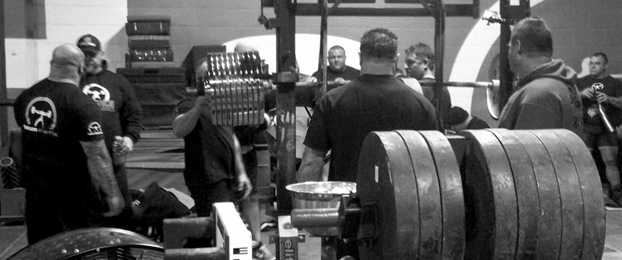
Patterned thuds approached me faster than normal.
Dave stormed into the office, slammed down his energy drink and crashed onto his chair, still scrolling through his e-mails on his iPhone.
“I've been blasted through social media forums, and now I have three e-mails telling me why I shouldn’t use a false grip,” he muttered as he rolled his eyes.
I'll admit, it’s hard to contain laughter when my boss is upset because of the way people on the internet insist they should grip the barbell. But, social media expert, Dave, was genuinely perturbed about the whole situation.
“They just don’t know the facts,” Dave went on half-laughing, half-serious. He was talking louder and a bit more excited now, “Grab a camera and meet me outside, we’re going to film a video on false grips.”
I met him out in the gym and ended up with almost 10 minutes of false grip footage. I decided not to edit any of it.
There was obviously a lot Dave had to say on the subject. I learned that the false grip seems to keep getting slammed for causing injuries. Especially after the USC incident in September, everyone thinks having a false grip is a bad thing. Dave isn’t like everyone else.
“I understand there are certain dangers to it,” Dave said. “It’s not a bad thing at all, people just don’t know how to use it. They don’t know what they’re doing or what the hell they’re talking about. It’s not an evil grip.”
I guess the false grip, like everything else in life, has its advantages and disadvantages. It just depends on how it’s used.
“The false grip saved my bench press and put years on,” Dave admitted.
Dave tore his pec and went through surgery to have it reattached. After surgery, he attempted to lift again at Westside and it was there he was introduced to the false grip.
“Before surgery, my highest bench was 520,” Dave said. “After surgery with the false grip, it was over 600.”
With the false grip, he could tuck harder and put more strain on his triceps and arms. Stress was relieved from his shoulders and beat-up pecs.
“When your pecs are torn-up, it’s hard to rely on them for pressing power,” Dave said. “Almost everyone in the gym was using a false grip. It used more tricep, shortened the distance the bar would travel and allowed for a wider grip. It's foolish to take a false grip with the shirts out there now- there’s no doubt in my mind you’d dump it for sure.”
Get a Grip:
1.) Dig hand into the bar as hard as you possibly can- like a full grip.
2.) Wrap your hands around the bar as tight as you can.
3.) Pull thumbs under, squeeze fingers down hard and pull bar out. Your lift off partner may need to tuck your thumbs under.
If you do this correctly, it puts you in position with the bar and in line with your wrist. It allows for an easier tuck coming down. It also puts less strain on your shoulders and pecs and makes your arms do more work.
Lose the Grip:
1.) DO NOT take bar out with a loose grip.
2.) DO NOT let the bar move around in your hands.
“I see people do the football bench press, where they are not tight to begin with," said said. "Then they do some kind of ‘let’s get jacked up movement.’ If you're a beginner and you are going to try to use a false grip and you're doing stuff like that, you deserve to have your teeth busted out. The false grip is not for beginners. It is for advanced lifters.”
Years ago, Dave, used the false grip for competitions. The line on the bar had to be covered. If a judge could see the line, it was an illegal grip.
“A full grip cannot get as wide," Dave explained. "If you took a false grip and kept your hands in same place for a full grip, your thumbs would not cover the line. Therefore, the false grip would give you an extra inch per side and the bar wouldn’t have to travel as far.”








